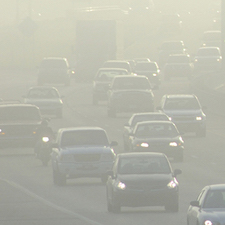 The term “environmental racism” was first used about 40 years ago and brought attention to the fact that African Americans are more likely than their White peers to be exposed to air, water, and other types of pollution. New research led by scholars at the Harvard T.H. Chan School of Public Health shows that decades later, environmental racism is still very much an issue that needs to be addressed.
The term “environmental racism” was first used about 40 years ago and brought attention to the fact that African Americans are more likely than their White peers to be exposed to air, water, and other types of pollution. New research led by scholars at the Harvard T.H. Chan School of Public Health shows that decades later, environmental racism is still very much an issue that needs to be addressed.
In collaboration with the Environmental Systems Research Institute, the study authors developed a new platform linking 17 years’ worth of demographic data with data on fine particulate pollution from across the United States. Air pollution data was based on satellite observations and atmospheric chemistry models. The data was compared to racial and income data for the nation’s 32,000 ZIP code tabulation areas.
They found that nationwide, air pollution had been reduced by 40 percent during the first decades of this century. But in 2016, the average air pollution concentration for the Black population was 13.7 percent higher than that of the White population. Further, the study found that, as the Black population increased in a particular zip code, so did the air pollution, with a steep incline seen for zip codes where more than 85 percent of the population was Black.
“Our findings regarding relative disparities indicate the importance of strong, targeted air- pollution-reduction strategies, not only to reduce overall air-pollution levels but also to move closer toward the EPA’s aim to provide all people with the same degree of protection from environmental hazards,” said Abdulrahman Jbaily, a former postdoctoral researcher at Harvard Chan School and lead author of the study.
The full study, “Air Pollution Exposure Disparities Across US Population and Income Groups” was published in the journal Nature. It may be accessed here.










